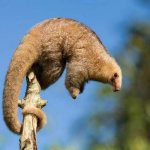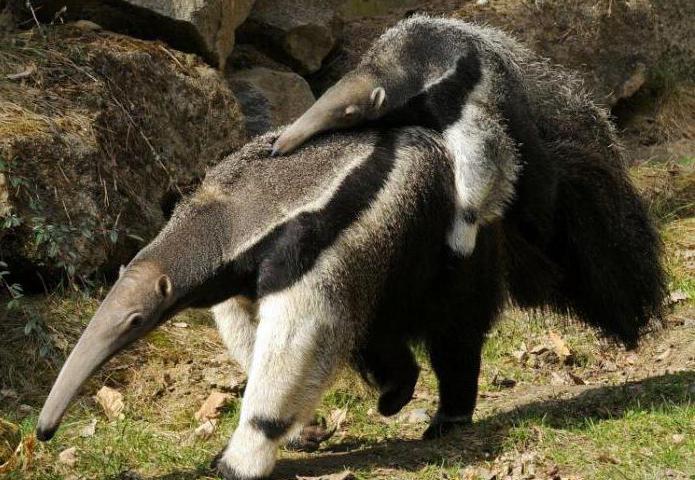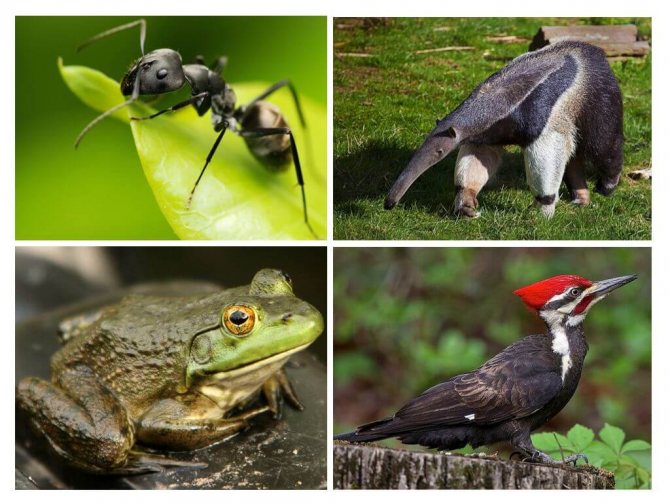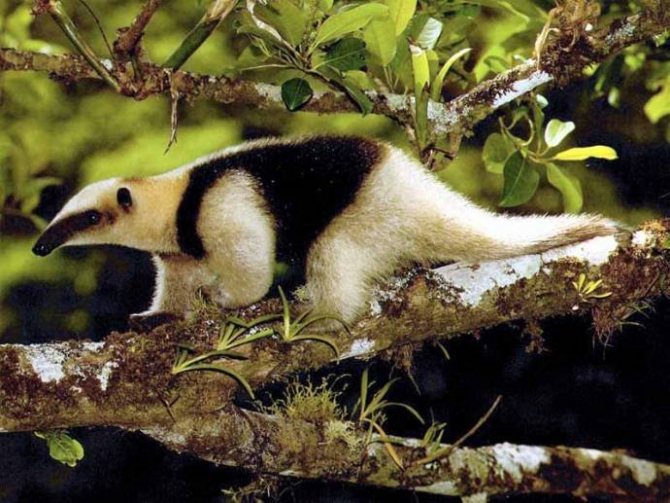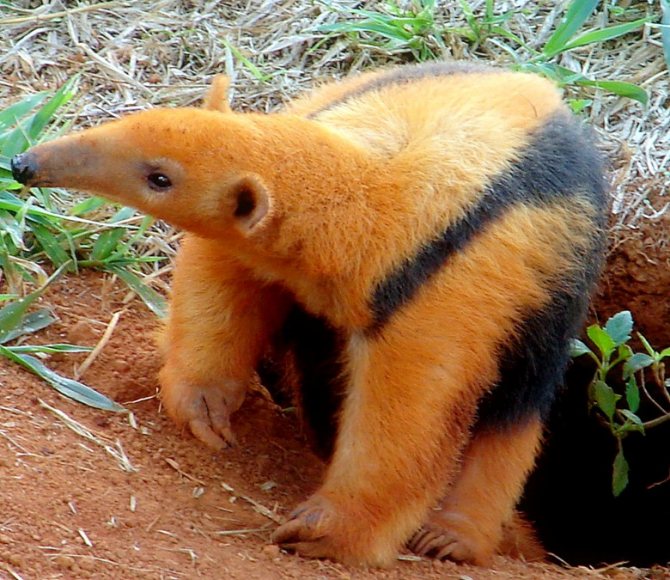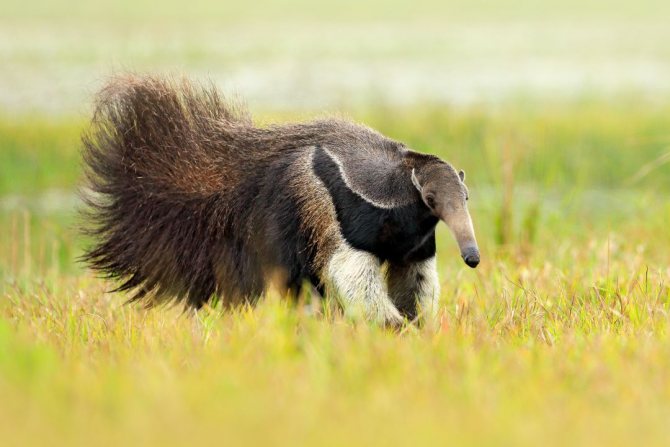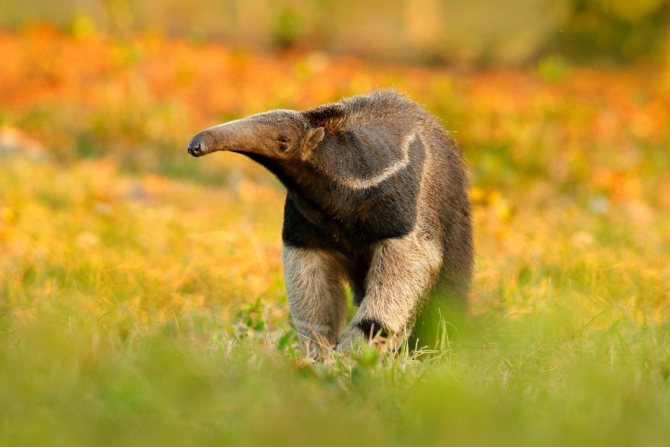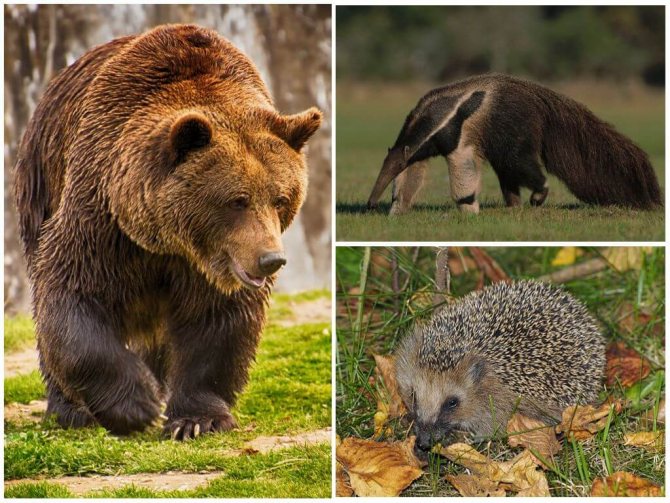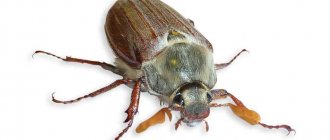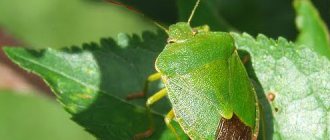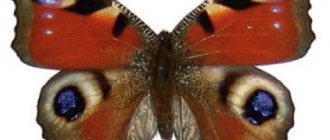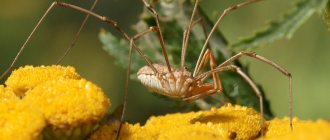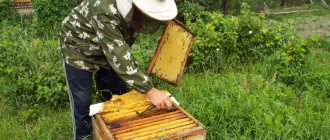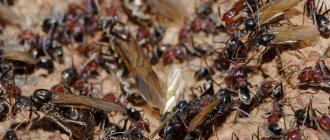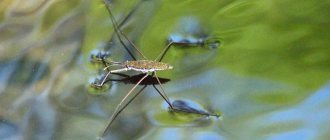- Where does the anteater live
Anteaters are perhaps one of the most amazing mammals on our planet, thanks to their more than unusual appearance, they have gained wide fame among lovers of exotic animals. And the first person who got his pet anteater was the great and eccentric artist Salvador Dali, quite possibly the appearance of this animal inspired him to paint his unusual paintings. As for the anteaters, they belong to the order of edentulous, their distant relatives are armadillos and
sloths (although outwardly they are not at all similar), there are three species of anteaters themselves, in natural conditions they live exclusively on the American continent, but read about all this in more detail further.
Anteater - description, structure. What does an anteater look like?
The sizes of anteaters vary depending on the species, so the largest giant anteater reaches two meters in length, moreover, interestingly, half of its size falls on the tail. Its weight is approximately 30-35 kg.
The smallest dwarf anteater is only 16-20 cm long and weighs no more than 400 grams.

The head of the anteater is small, but strongly elongated, and its length can be 30% of the length of its body. The anteater's jaws have practically grown together, so it is impossible for him to open his mouth wide, however, he does not need to do this. Like having teeth. Yes, anteaters do not have teeth from the word at all, but the absence of teeth is more than compensated for by the anteater's long and muscular tongue, which stretches along the entire length of their muzzle and is the real pride of this animal. The length of the tongue of the giant anteater reaches 60 cm, it is the longest tongue among all living creatures living on Earth.


The eyes and ears of anteaters are not large, but the paws are strong, muscular, and besides, they are armed with long and curved claws. These very claws are the only detail of their appearance that reminds of their relationship with sloths and armadillos. Also, anteaters have a well-developed charm and can smell potential prey by smell.
Also, anteaters are the owners of quite long and, moreover, muscular tails, which have a useful use - with their help, anteaters can move through trees.
The giant anteater's coat is long, especially on the tail, which makes it look like a broom. But in other species of anteaters, on the contrary, wool is short and tough.
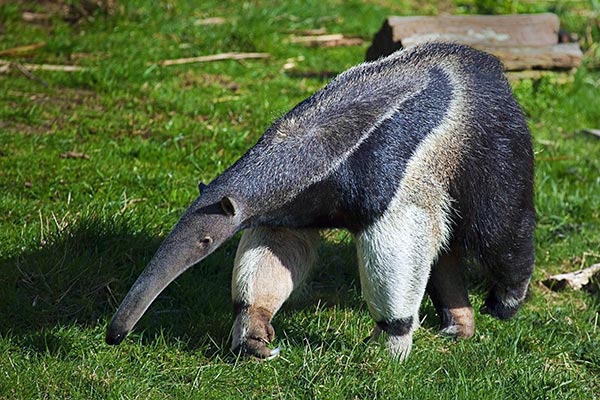

Where does the anteater live
Like their other relatives from the order of edentulous, anteaters live exclusively in Central and South America, especially a lot of them live in Paraguay, Uruguay, Argentina, Brazil. The northern border of their habitat is in Mexico. Anteaters are thermophilic animals and, accordingly, live exclusively in places with a warm climate. They like to settle in forests (all anteaters, with the exception of the giant one, easily climb trees) and grassy plains, where many insects live - their potential food.
Distribution area
Anteaters can be found throughout Central America, as well as in the southeastern parts of Mexico. These species are found in large numbers in the forests of Venezuela and northern Argentina. Southern Brazil and Uruguay are also distinguished by the presence of anteaters.
Favorite places of these animals are forest edges and savannas, which are located no higher than 2000 m. Also, anteaters can be found in the immediate vicinity of streams and rivers or on trees with a large number of lianas.
What does the anteater eat?
As you might guess from the name of this animal, the favorite food of anteaters is, of course, ants, as well as termites. But they are not averse to feasting on other insects, but only small ones, but you should not be afraid of large insects of anteaters, they simply do not eat them. The point here is that the anteaters do not have teeth, as a result, they swallow their prey whole, and already in their stomach it is digested by gastric juice. And since the food of the anteaters is small, and the size, on the contrary, is not so small to feed themselves, they devote all their time to finding something to eat. Aki living vacuum cleaners they roam the jungle, constantly sniffing out and sucking in everything edible. If, on the way of the anteater, you suddenly meet an anthill or termite mound, then a real holiday and a feast for the whole world comes for him (only for ants or termites such a meeting turns into a real disaster).
In the process of absorbing food, the anteater's tongue moves at an incredible speed - up to 160 times per minute. Prey sticks to it thanks to sticky saliva.
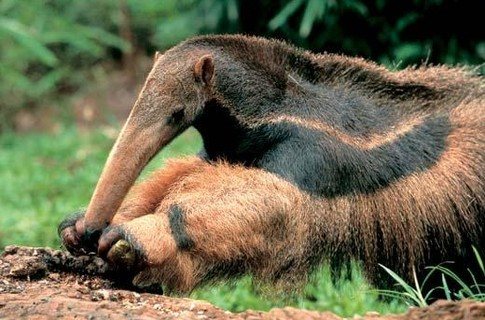

Ant feeding
Ants need abundant nutrition, are predators and destroy plant pests. Adults consume carbon food: plant juice, their seeds and nectar, mushrooms, vegetables, fruits, sweets.
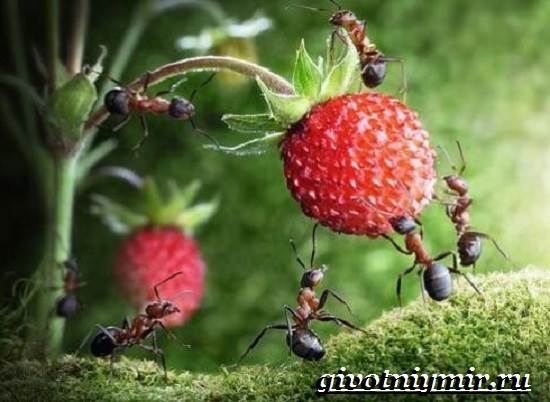

The larvae are provided with protein nutrition, which includes insects and invertebrates: mealy worms, cicadas, aphids, scale insects and others. For this, working ants pick up already dead individuals and attack the living.
Human homes are sometimes ideal places for dangerous farming of pharaoh ants. There is a lot of warmth and food, in search of which insects are tireless and resourceful, overcoming any obstacles.
Finding a power source, they form a whole highway to it, along which they move in large quantities. Often harm ants applied to people's homes, gardens and vegetable gardens.
Enemies of anteaters
However, the anteaters themselves, in turn, can also become prey to other dangerous predators, especially jaguars,
panther of large boas. True, to protect against the latter, anteaters have an essential argument - muscular legs with claws. In case of danger, the anteater falls on its back and begins to swing in all directions with all its four paws. No matter how funny and awkward such a sight may seem, in such a position the anteater can inflict serious wounds on its potential offender.
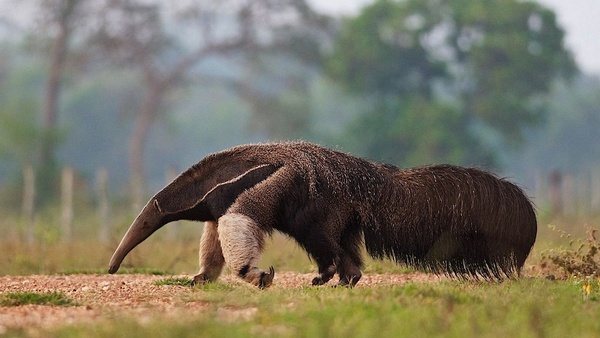

Types of anteaters, photos and names
As we wrote at the beginning, there are three types of anteaters in nature, and then we will write about each of them.
Giant anteater
The largest representative of the anteater family, living in South and Central America and also the only one of this family, unable to climb trees due to its large size. Leads predominantly nocturnal, when walking characteristically bends his legs, leaning on the back of the forelimbs. Sharp claws on powerful paws are a means of protection from predators.
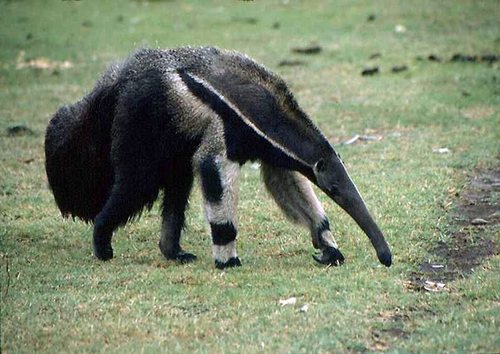

Pygmy anteater
On the contrary, the smallest anteater living in the rainforests of South America. The dwarf anteater knows how to climb trees perfectly, moreover, trees for him are a safe refuge from predators. Like other anteaters, it feeds on small insects, ants, termites, and is nocturnal.
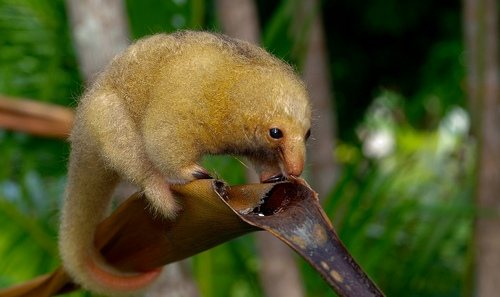

Tamandua anteater
He is a four-toed anteater, lives in Central America, and especially a lot of them are found in southern Mexico. Relatively small in size, it is larger than the dwarf anteater, but much smaller than the giant one, its body length is up to 88 cm, and its weight is 4-5 kg. Just like its dwarf relative, tamandua perfectly climbs trees, according to the observation of Venezuelan zoologists, spends from 13 to 64% of its life in trees. He has poor eyesight, but excellent charm, by smell he finds his favorite prey, ants and termites.


An interesting fact: the Amazon Indians have long tamed the Tamandua anteaters, which have been used since ancient times to fight ants and termites in their homes.
Ant colony members
The inhabitants of the anthill are divided into 4 groups:
- Females (queens) are the founders of any ant house, their function is to lay eggs. There is only one female queen in the colony, which the ants carefully protect, feed and cherish.
- Males. They die some time after mating (their main function).
- Worker ants (foragers). Their duties include taking care of all individuals of the family, delivering food and protecting the anthill from the encroachments of enemies.
- Larvae. Future offspring. The larvae are divided into 2 types: those capable of feeding on their own and those in need of feeding. The latter species predominates; adult ants feed such larvae with semi-digested food from their own esophagus.
All this large family needs huge amounts of food. What do ants eat?
How anteaters breed
Anteaters mate twice a year: in spring and autumn. Pregnancy lasts from three months to six months, depending on the species, after which a completely naked little anteater is born, which, however, is already able to independently climb onto its mother's back.
An interesting fact: anteater dads also take an active part in raising their babies, carrying them on their backs with their mother.
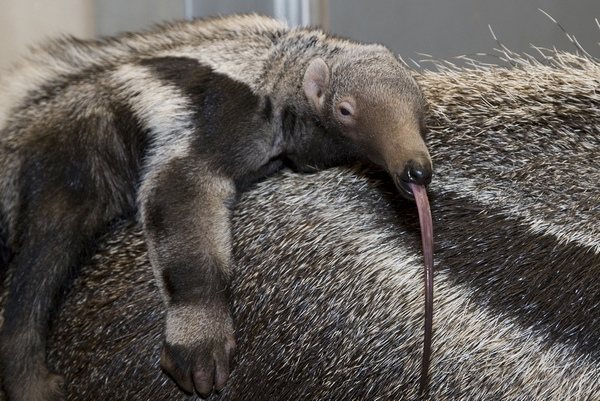

Until a month of life, small anteaters move exclusively on the backs of their parents and only then begin to take their first independent steps.
Feeding the young anteaters for us may not seem like a very disagreeable sight, the mother and father of the anteaters belch up a special mass of half-digested insects, which serves as food for the growing small anteaters.
Caring for offspring
Anteaters breed very slowly, because in one litter there is only one small cub. He is born covered with wool, the weight of a newborn cub is about 1.4-1.8 kg. The maternal instinct of the female is extremely strong: she devotes her entire life to offspring. Not having time to raise one cub, the female is already caring for another. When the baby anteater is born, he almost immediately settles on the mother's back. From that moment on, the cub travels with her in this way. When you look at this small family, you don't even immediately notice that a cub has settled down on the back of the female, so much its fur merges with the mother's.
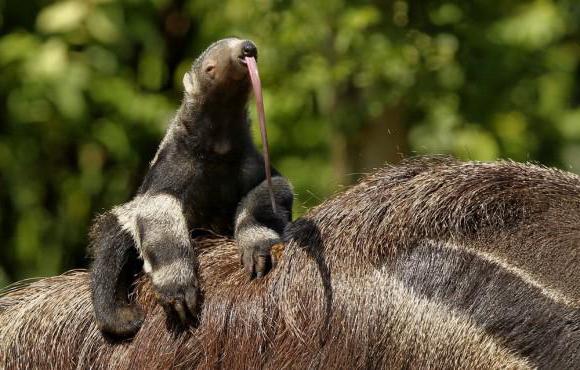

At the age of one month, the small fluffy predator is able to move independently. He no longer skates on his mother's back, but literally follows her on her heels. This continues until the young anteater is two years old. Only at this age does the animal become independent and can do without the care of the mother.
Interesting facts about anteaters
cats and dogs and even love to play with children.It is true that keeping an anteater at home is not so easy, because they absolutely cannot stand the cold, a favorable temperature for them should be at least 24-26 C.
Conservation in nature
Locals rarely hunt anteaters for meat; tamandua skins are used in the artisanal leather industry, but only marginally. However, the giant anteater has disappeared from much of its historical range in Central America due to habitat destruction and human activity. In South America, anteaters are often hunted for trophies by animal traders. In parts of Peru and Brazil, they were completely exterminated.
Tamandua is also persecuted - he effectively defends himself, so they arrange sports hunting with dogs on him. Tamandua often die under the wheels of cars. However, the most serious threat to these animals is the loss of habitat and the destruction of the few insect species on which they can feed.
Anteater video
And in conclusion for you a funny video about anteaters, entitled "10 reasons to get an anteater."


When writing the article, I tried to make it as interesting, useful and high-quality as possible. I would be grateful for any feedback and constructive criticism in the form of comments to the article. Also, you can write your wish / question / suggestion to my mail or Facebook, sincerely the author.
Popular science magazine Poznavayka
This article is available in English - Anteater.

